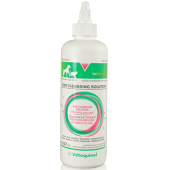Cats have retractable claws that continually grow. Outdoors, your pet will naturally file the tip of theirs claws by climbing fences and scratching tree bark. Indoors, a scratching post is a must. But in either case, this isn’t always enough: that’s when it’s time to fall back on nail trimmers!
The importance of regularly trimming nails
When nails are too long, they curve inward and can no longer completely retract. Cat’s claws can then snag on certain surfaces — such as carpets — or experience discomfort in their movements. If we let our cats’ nails grow too long, they can even pierce the paw pads, which can cause pain and infections. By trimming your cat’s nails every 10 to 14 days, these types of problems are easily avoidable.
Steps to trim your cat’s nails
Choose a time when your pet is calm (e.g., during a nap following a meal) and get settled in a quiet room, with no distractions.
- Prepare the supplies: In addition to the nail trimmer, have on hand a towel and styptic powder, which is a coagulation agent to stop bleeding in case of a slip.
- Subdue your cat: Hold your pet sitting on your lap, back towards you, and immobilise your kitty by placing your forearm under its head. If your cat squirms, wrap it in a towel to limit movement.
- Extend the claws: Hold a paw and apply pressure with your thumb and fingers at the base of the claw, just above the pad. The claw should appear naturally.
- Position the nail trimmer: First, find the pink part of the nail, a very sensitive area that contains the blood vessels and nerves. Place the nail trimmer before this boundary line (closer to the tip) to only trim the white part. If you accidently cut too close to the pink part and it bleeds, apply the styptic powder.
- Trim the nails: Make sure you clip the claw vertically, from top to bottom; a horizontal cut can split the nail’s surface.
- Reward your pet: If your cat is not used to the nail trimmer, give it a treat after trimming each nail. If your pet is a seasoned expert, reward your furry friend with a treat after each paw or at the end of the session. A few words of praise are also welcome!
- Stop or repeat: According to your cat’s temperament, you may only be able to trim a few nails at a time, either a few from one paw or both, or all of them, by repeating the above steps.
If this is your first cat, know that your furry friend has a hidden “thumb” at the base of the front paws. Don’t forget to trim these nails too!
And if my cat refuses to cooperate?
If your cat resists, avoid raising your voice or punishment. Be patient: with time (and treats!) your pet will eventually get used to nail trimming and become more receptive. If necessary, talk to your veterinarian to get advice or ask them to trim your pet’s nails.






